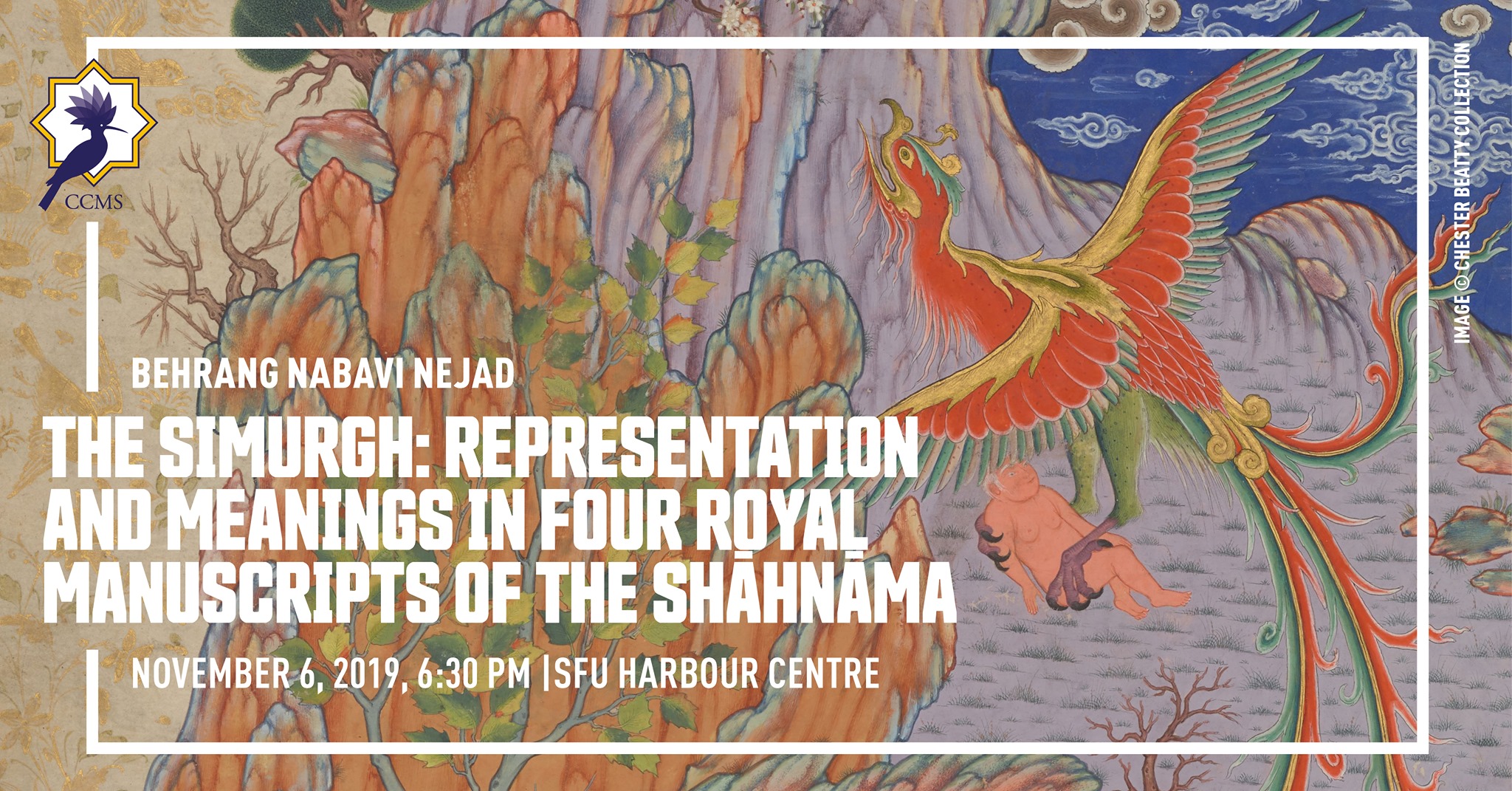Event Category: Art Gallery and ExhibitsEvent Tags: #art
- Overview
The Simurgh: Representations and Meanings in Four Royal Manuscripts of the Shāhnāma
Dr. Behrang Nabavi Nejad examines the Simurgh, the mythical bird of ancient Persia, in four illustrated royal manuscripts of the Shāhnāma.
The fantastic Simurgh, the mythical bird of ancient Persia, has maintained a significant presence in Persian culture. The visual and textual references to this bird manifest a mysterious and complex symbolism shaped around this super-natural creature in Persian literary sources. The Simurgh evolves from a myth, to the symbol of royalty, to the guardian of Persian kingdom, and finally to represent the Divine. This promotion and transformation are facilitated through the idea of divine protection and kingship inherited from ancient Persia, transforming the representations of the Simurgh into powerful images. The intertextual analysis of the Avestan and Pahlavi references to the Simurgh, and their comparison with the characteristics of the Simurgh in the Shāhnāma, has allowed me to trace the amalgamation of these sources in the Persian national epics. Through a process of literary creativity, Firdausi combines the characteristics of the two mythical birds, Saēna and Vāreghna, to shape the Simurgh in the Shāhnāma. In the light of these sources, the representations of the Simurgh are contextualized in this study. Through a close examination of the representations of the fantastic bird in the illustrative program of four royal manuscripts of the Shāhnāma, I argue for an ideologically charged nature for the representations of this bird in these manuscripts. These manuscripts comprise those produced for the Timurid prince, Muhammad Juki (1444-45), and the three Safavid kings, including Shah Tahmasp (1522-35), Shah Ismaʿil II (1576-77), and Shah ʿAbbas I (1587-97). Thus, I suggest that the presence of the royal, divine, and Iranian glory (farr-i īzadī, farr-i Īrānī), sought for by both rulers and individuals (in this case, the artists of the paintings discussed) in the Persian system of though, charges the representations of the Simurgh in these illustrated manuscripts of the Shāhnāma produced between the fourteenth and the seventeenth centuries
- Photos
- Map
No Records Found
Sorry, no records were found. Please adjust your search criteria and try again.
Google Map Not Loaded
Sorry, unable to load Google Maps API.
- Reviews

